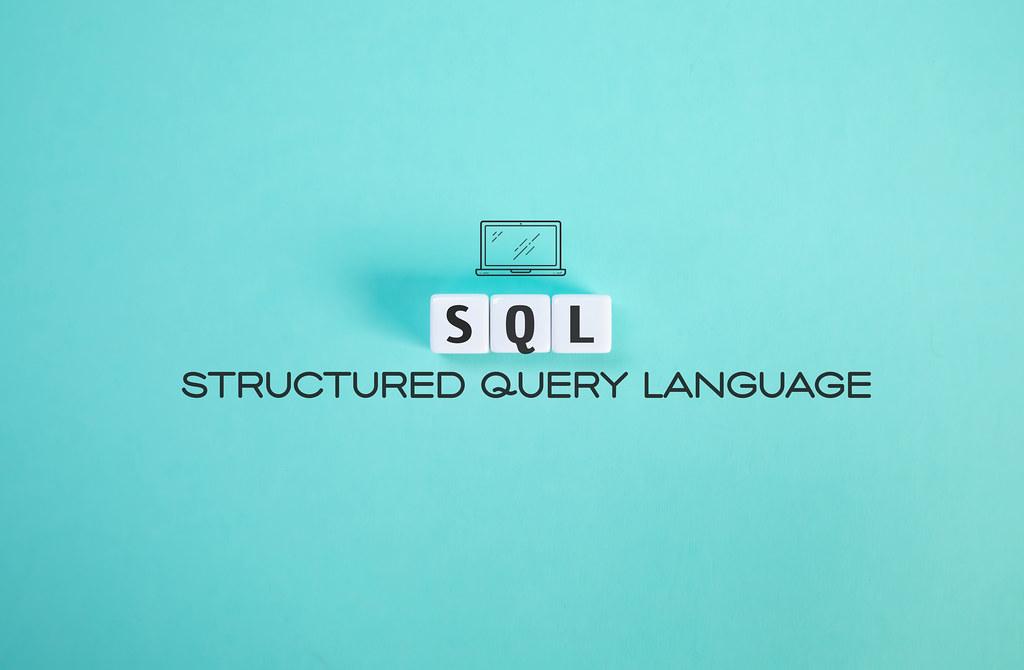Companies work on data for their development strategies. They have to analyze, structure, and use data properly. That’s why they need data modelers to handle such complicated tasks.
If you are interested in the data industry, learn how to become a data modeler. I’m working in this role, and I bet you will have an interesting journey ahead! So, start your adventure now!
Overview of Data Modeler
Every company has database management systems. Data modeling is about evaluating and measuring the data flows within those systems.
More specifically, data modeling determines the space needed to store data. It also handles all the factors related to the data environment.
Who Is A Data Modeler?
A data modeler is the engineer and analyst that designs data models. They use databases to control the data flows between different departments.
The data modeler also offers data solutions for customer experience and product life cycle. Those solutions can help their companies achieve their goals.
Working Environments
I’m part of the IT department in my company. My primary task is to build databases and information systems.
But it’s not the only choice for data modelers. You can work in R&D companies. They need you to create data models to develop products or test theories.
Marketing requires data modeling, too. So, you can work in the marketing department. Your knowledge of data modeling will help your company understand client behaviors.

Education Requirements
Most companies prefer data modelers with a bachelor’s degree. You can get one in information science, computer science, or a similar field.
However, your experience is more valuable. So, you can become a data modeler without a degree. Yet, you should earn certifications to learn about your field. Then, work to gain experience.
Responsibilities
I work with databases every day as a data modeler. Here are my responsibilities:
- Firstly, I learn the needs of my company. Then, I can develop data models based on those requirements.
- After that, I define databases. This task may involve conceptual, physical, and logical levels.
- I use my knowledge of data modeling to implement data solutions. They will then help improve business activities.
- I must choose the best practices and tools to develop data models. It means I have to try different data coding techniques while sticking to naming conventions. So, my data models can be consistent and reliable.
- After building the models, I maintain them. If there are any issues, I will find the causes and address them.
- I also need to upgrade and optimize data systems.
How To Become A Data Modeler
There are lots of things to do on this journey. Here are six steps to success.
1. Learn the Basics
Firstly, grasp the basics of data modeling. The curriculum will cover what you should know if you want to get a bachelor’s degree. But if you study independently, you must plan a clear path.
It would be best to take online courses. They are often shorter than the university program. Whichever path you choose, focus on these concepts:
Data models
There are three primary types of models that businesses often use.
- Conceptual model: This model illustrates the connections between database concepts. Instead of working on the databases, you will get to know their entities and how they interact.
- Logical model: You can use this model to further define data entities’ architecture. They also help you picture the relationships between those entities. Hence, this model is popular for projects that require a technical map for data.
- Physical model: You will store your data physically in a database. In this case, you need a physical model. Then, you can find the exact data attributes and types.
DBMS
DBMS (Database Management System) gives you a clear picture of the data. Thanks to it, you can easily design conceptual, logical, and physical models.
Plus, as a data modeler, you need to gather data from the data system. Then, arrange it into databases for analysis. There are many things to cover, but you can handle them after learning DBMS.
SQL
SQL (Structured Query Language) is a language for handling data in a relational database. This database keeps the info in tabular forms. They have columns and rows that present data attributes. You can also check the relationships between data values by looking at the tables.
Working with SQL means using its statements. You can then store, remove, or update data from the database. It’s good for optimizing database performance.
Data analysis
You must be skilled in analyzing data. This task involves customizing reports and using queries. Then, your company can make informed decisions for its operations.
ETL
ETL (Extract, Transform, and Load) is a process every data modeler must take. Firstly, you collect data from different sources. Then, convert it and store it in a data warehouse.

2. Learn Data Modeling Tools
Tools are important for data modelers. Even after years of working, I still need them to help with my job. Here are my best friends:
SQL
After learning the basics of SQL, practice using it. The following tools will help you with your practice time:
- Azure Data Studio: This editor can handle on-demand SQL queries easily. It assists you in viewing and saving results as Excel, JSON, and text, too.
- SSMS: If you want to easily manage SQL servers, go for this tool. It will give you full GUI support.
- SSDT: You can use this tool to design and implement any content type on the SQL server.
erwin
The erwin software has been around for more than 30 years. It’s also the trusted option for big companies to handle their databases.
This tool helps you automate complicated tasks while reducing errors. Thus, you can develop high-quality data models efficiently.
ER/Studio
There are tons of tools for data modeling on this platform. They help you with business glossaries, too.
The best thing about ER/Studio is that it can aid in the design process from start to end. During the process, the data remains accessible within your company.
Lucidchart
Databases are difficult to work with because they contain too much info. Thus, you need a lot of time to understand them.
I had the same issue, and Lucidchart saved my life! This streamlined diagramming app helps me visualize complicated systems.
Moreover, as a data modeler, you can use Lucidchart to build conceptual models. Then, share them with your team. The models will develop when your teammates contribute to them.

3. Hone the Essential Skills
Next, develop your skills. Luckily, you can build and hone most of them while studying and working.
Technical skills
Focus on technical skills first. They prove how well you can perform at work and solve technical problems.
- Database technologies: As a data modeler, you always work with technology. So, try to practice using NoSQL and SQL technologies.
- Database management: This aspect is one of the keys to your job. You must deeply understand database design and management to excel in your role.
- Data modeling: As I have said, there are three types of data models. To become a good data modeler, practice with all of them.
Soft skills
Soft skills are equally important. The most crucial ones for your future job include the following:
- Communication: You work with other developers and designers. Sometimes, you have to interact with stakeholders and clients. Thus, communication skills are necessary.
- Organization: Your duty list must be long. So, learn how to organize your time and other stuff. Organization skills can help a lot.
- Analytical thinking: You need to analyze data. The database is huge, but your analytical thinking will be your secret weapon to deal with it.

4. Find a Mentor
What do you often do when encountering problems at work? If I get into trouble, I will seek advice from my mentor. You should have one, too.
The biggest benefit of having a mentor by your side is that they can answer your questions. So don’t be shy to ask them about technical stuff or work-life balance.
But who should be your mentor? You can find one in your company or online communities. They should be experts in your field. Thus, they know how to solve your problems.
You don’t need an official relationship with your mentor. Instead, just find a reliable person willing to listen to your stories. Whoever can help you out is your mentor.

5. Get an Entry-Level Position
After that, get an entry-level position. This job will help you earn experience and knowledge for your data modeler career. During this time, you can join real projects. They will help you picture what data modeling exactly looks like.
Be active at work, too. Since it’s your first job, there must be tons of questions in your mind. So don’t be shy to speak up. Your colleagues and mentor will give you a helping hand.
6. Advance in Your Data Modeler Career
You often need two years at the entry-level data modeler position. Yet, the progress depends on your own pace.
After gaining enough experience, you can level up to a senior position. You may need additional certifications for the job.

How Much Can You Earn as a Data Modeler?
This job is well-paid. As of 2023, a data modeler can earn around $121,727 per year. The more experience you have, the higher pay you can get.
Your location also affects how much you can make. For example, a data modeler in San Jose can earn up to $155,168 per year.
Meanwhile, the average annual salary for those in Santa Cruz is about $145,736. There is a gap between them, but the salary rate is still high!
How Long Does It Take To Become a Data Modeler?
It depends on your prior knowledge and chosen path. For instance, if you are a beginner, you can enroll in a bootcamp to learn the specific skills needed for your job. This program often lasts only one year. It’s also the fastest way to become a data modeler.
On the other hand, if you want to get a university degree, spend four years studying at school. It takes time, but many businesses like your degree.
Is Data Modeling A Promising Career?
Yes. Data modeling is in high demand because data is important for business. So, companies don’t mind offering a high salary to hire talented data modelers.
Moreover, you will get the skills needed for other relevant fields when studying to become a data modeler. You will have more job opportunities then.

FAQs
1. Is it hard to become a data modeler?
Yes. You must learn a lot to become a good data modeler. There are also many tools to use at work, and you need time to practice using them.
2. Are data modelers in demand?
Yes. Companies need data modelers to develop reliable databases. These professionals help build secure app systems, too.
3. Does a data modeler need to code?
As a data modeler, you just need to know SQL. This language helps work with databases and handle data models. However, it’s still good if you know some programming languages.
4. Is a data modeler the same as a data analyst?
No. A data analyst, as the name suggests, analyzes data. Then, they find insights on which stakeholders can make informed business decisions.
On the other hand, a data modeler designs how to store and process data. Other employees in the company, like the data analyst, can then access it quickly.
Wrapping Words
You need to learn data modeling fundamentals and tools to work well as a data modeler. Hone your skills, too. Once you’ve got them all, you can shine in your role.
Your journey will be full of challenges. But trust me! You have a promising career to look forward to, not just the obstacles along your path. So be consistent to achieve your goal!
